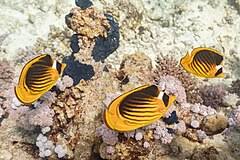
The Pompadour Rose, a symbol of elegance and sophistication, is more than just a beautiful flower. It plays a vital role in various biological systems, influencing and interacting with a diverse array of organisms and environmental factors. Understanding the complex relationships between Pompadour Roses and their surrounding biological systems can enhance our appreciation of these plants and inform better horticultural practices. This section explores the interconnections between Pompadour Roses and soil health, pollinators, pests, companion plants, and broader ecological impacts.
#### Soil Health and Microbial Interactions
Soil is the foundation of plant health, and the relationship between Pompadour Roses and the soil they grow in is crucial. The quality of the soil affects the rose’s ability to absorb water and nutrients, while the presence of Pompadour Roses can influence soil composition and health.
– **Nutrient Cycling:** Pompadour Roses contribute to the nutrient cycling within their ecosystem. As they grow, they absorb essential nutrients from the soil, which are then returned to the soil through leaf litter, decaying roots, and other organic matter. This process enriches the soil and promotes the growth of beneficial microorganisms.
– **Mycorrhizal Associations:** Mycorrhizal fungi form symbiotic relationships with the roots of Pompadour Roses. These fungi extend the root system, improving water and nutrient uptake, particularly phosphorus. In return, the roses provide the fungi with carbohydrates produced through photosynthesis. This mutualistic relationship enhances the health and vigor of Pompadour Roses.
– **Soil Structure:** The roots of Pompadour Roses help improve soil structure by creating channels for air and water movement. This reduces soil compaction and promotes the growth of other plants by facilitating root penetration and microbial activity.
#### Pollinators and Biodiversity
Pollination is a critical process for the reproduction of flowering plants, including Pompadour Roses. The relationship between these roses and their pollinators exemplifies the interconnectedness of biological systems.
– **Attraction of Pollinators:** Pompadour Roses produce vibrant, fragrant flowers that attract a variety of pollinators, including bees, butterflies, and hoverflies. The flowers’ structure facilitates the transfer of pollen from the stamens to the pollinators, which then carry it to other flowers, ensuring cross-pollination and genetic diversity.
– **Pollinator Habitat:** By providing nectar and pollen, Pompadour Roses support the local pollinator populations. This is especially important in urban or agricultural landscapes where natural habitats may be limited. The presence of these roses can enhance biodiversity and the overall health of pollinator communities.
– **Seasonal Blooms:** The blooming periods of Pompadour Roses can help fill gaps in the availability of floral resources for pollinators. By planting roses that bloom at different times, gardeners can ensure a continuous supply of food for pollinators throughout the growing season.
#### Pest Relationships and Integrated Pest Management
The relationship between Pompadour Roses and various pests is complex, involving both detrimental and beneficial interactions. Understanding these relationships is key to effective pest management and maintaining healthy rose plants.
– **Common Pests:** Pompadour Roses are susceptible to a range of pests, including aphids, spider mites, thrips, and rose chafers. These pests can cause significant damage to the plants, affecting their growth and bloom quality.
– **Natural Predators:** Many beneficial insects prey on rose pests. Ladybugs, lacewings, and predatory mites feed on aphids and other soft-bodied insects. Encouraging these natural predators through companion planting and reduced pesticide use can help control pest populations.
– **Integrated Pest Management (IPM):** IPM strategies involve a combination of cultural, biological, and chemical controls to manage pests. For Pompadour Roses, this might include regular monitoring for pest signs, introducing beneficial insects, using insecticidal soaps or oils, and applying targeted chemical treatments only when necessary.
#### Companion Planting and Ecological Interactions
Companion planting involves growing different plants together to benefit one or both species. Pompadour Roses can benefit from strategic companion planting, which can enhance their growth, deter pests, and improve soil health.
– **Companion Plants:** Certain plants, like garlic, chives, and marigolds, can repel pests that commonly affect roses. These plants release natural chemicals that deter insects, reducing the need for chemical pesticides and promoting a healthier rose garden.
– **Beneficial Relationships:** Companion plants can also attract beneficial insects that prey on rose pests. For example, planting dill or fennel can attract ladybugs and lacewings, which help control aphid populations.
– **Soil Health:** Leguminous plants like clover or beans can fix nitrogen in the soil, enhancing fertility and benefiting nearby roses. Additionally, cover crops like clover can prevent soil erosion and improve soil structure.
#### Ecological Impact and Sustainability
The cultivation of Pompadour Roses has broader ecological implications, influencing local ecosystems and contributing to sustainability efforts.
– **Biodiversity:** By planting Pompadour Roses, gardeners can increase biodiversity in their gardens. This not only enhances the aesthetic appeal but also supports a variety of organisms, from pollinators to soil microbes, creating a more resilient ecosystem.
– **Carbon Sequestration:** Like all plants, Pompadour Roses absorb carbon dioxide during photosynthesis, contributing to carbon sequestration. This process helps mitigate the effects of climate change by reducing atmospheric carbon levels.
– **Sustainable Practices:** Adopting sustainable gardening practices, such as using organic fertilizers, composting, and reducing pesticide use, can minimize the environmental impact of growing Pompadour Roses. These practices promote the health of the plants and the surrounding ecosystem.
#### Climatic Adaptations and Environmental Interactions
The ability of Pompadour Roses to adapt to various climatic conditions is essential for their survival and integration into different ecosystems. Their interaction with the environment affects their growth and resilience.
– **Heat Tolerance:** Pompadour Roses have moderate heat tolerance, making them suitable for a range of climates. However, extreme heat can stress the plants, leading to reduced growth and flowering. Providing adequate water and mulching can help mitigate the effects of high temperatures.
– **Humidity:** High humidity levels can promote fungal diseases in Pompadour Roses, such as black spot and powdery mildew. Ensuring good air circulation and applying preventive fungicidal treatments can help manage these issues.
– **Drought Resistance:** While Pompadour Roses require regular watering, they can tolerate short periods of drought. Mulching and proper soil management can help retain moisture and reduce the need for frequent watering.
#### Genetic Diversity and Breeding
Genetic diversity is crucial for the health and resilience of plant species, including Pompadour Roses. Breeding programs and the preservation of genetic resources play a significant role in maintaining this diversity.
– **Cultivar Development:** Breeders select and hybridize roses to develop new cultivars with desirable traits, such as disease resistance, unique colors, and improved fragrance. This process enhances the genetic diversity of Pompadour Roses and ensures their adaptability to different environments.
– **Preservation of Heritage Varieties:** Preserving heritage and heirloom rose varieties is important for maintaining genetic diversity. These older varieties often possess unique traits and greater resilience to environmental stresses.
– **Seed Banks:** Seed banks and botanical gardens play a vital role in conserving the genetic resources of roses. By storing seeds and plant material, these institutions help safeguard the genetic diversity of Pompadour Roses for future generations.
#### Human Interaction and Cultural Significance
Pompadour Roses hold significant cultural and historical value, influencing human societies and horticultural practices.
– **Historical Context:** Named after Madame de Pompadour, the influential mistress of King Louis XV of France, these roses symbolize elegance and sophistication. They have been cultivated for centuries, reflecting the cultural heritage of rose gardening.
– **Aesthetic Appeal:** The beauty and fragrance of Pompadour Roses make them popular in gardens, floral arrangements, and landscapes. Their cultural significance enhances their value in horticulture and design.
– **Educational Value:** Growing Pompadour Roses offers educational opportunities for gardeners, students, and researchers. Studying their biology, ecology, and care practices can deepen our understanding of plant science and environmental interactions.
#### Conclusion
Pompadour Roses are not only beautiful ornamental plants but also integral components of biological systems. Their interactions with soil, pollinators, pests, companion plants, and the broader environment highlight their ecological importance. By understanding these relationships, gardeners and horticulturists can cultivate Pompadour Roses in ways that support sustainable practices, enhance biodiversity, and preserve the cultural and genetic heritage of these exquisite flowers. Through mindful cultivation and appreciation of their ecological roles, Pompadour Roses can continue to thrive and enchant gardens around the world.
### Pompadour Roses and Their Relationship with Biological Systems (Part 2)
#### Ecological Contributions and Interactions
Pompadour Roses, like all plants, play a crucial role in their ecosystems, contributing to and interacting with various ecological processes and organisms. Understanding these interactions can help gardeners and environmentalists foster healthier environments and more resilient plant communities.
#### Role in Food Webs
Pompadour Roses contribute to local food webs by providing resources for various organisms.
– **Primary Producers:** As photosynthetic organisms, Pompadour Roses convert sunlight into chemical energy, forming the basis of the food web. They produce carbohydrates through photosynthesis, which are used to sustain their growth and provide energy for other organisms.
– **Herbivores:** Various herbivores, including insects like aphids and caterpillars, feed on the leaves, stems, and flowers of Pompadour Roses. These herbivores, in turn, serve as food for predators higher up the food chain.
– **Pollinators:** Bees, butterflies, and other pollinators feed on the nectar and pollen of Pompadour Roses. These pollinators are crucial for the reproduction of many plants, including the roses themselves, and play a key role in maintaining biodiversity.
– **Decomposers:** When parts of the Pompadour Rose plant die and fall to the ground, decomposers such as fungi and bacteria break down the organic matter, returning nutrients to the soil and completing the nutrient cycle.
#### Habitat and Shelter
Pompadour Roses provide habitat and shelter for various organisms, contributing to local biodiversity.
– **Insect Habitat:** The dense foliage and intricate structure of Pompadour Roses offer shelter for many insects, including beneficial species such as ladybugs, which prey on pests, and spiders, which help control insect populations.
– **Birds:** Birds may use Pompadour Roses as nesting sites or perches. Additionally, some bird species feed on insects found on the roses, helping to control pest populations.
– **Microhabitats:** The microclimate created by Pompadour Roses, including shaded and cooler areas beneath the plant, can support a variety of soil-dwelling organisms such as earthworms and beneficial nematodes.
#### Biodiversity Enhancement
Cultivating Pompadour Roses can enhance biodiversity in gardens and landscapes, providing benefits that extend beyond their immediate environment.
– **Plant Diversity:** Including Pompadour Roses in garden designs increases plant diversity, which can create more resilient ecosystems. Diverse plantings can support a wider range of organisms, from microbes to mammals.
– **Beneficial Insects:** By attracting pollinators and natural predators, Pompadour Roses help maintain ecological balance and reduce the need for chemical pest control.
– **Ecosystem Services:** Increased biodiversity resulting from the presence of Pompadour Roses contributes to essential ecosystem services such as pollination, pest control, and nutrient cycling.
#### Impact on Human Well-being
The relationship between Pompadour Roses and human well-being is multifaceted, involving aesthetic, psychological, and practical aspects.
– **Aesthetic Value:** The beauty and fragrance of Pompadour Roses enhance the aesthetic appeal of gardens and landscapes, providing visual pleasure and contributing to cultural and historical appreciation.
– **Psychological Benefits:** Gardening and interacting with plants like Pompadour Roses can have therapeutic effects, reducing stress, improving mood, and promoting mental well-being. The act of caring for roses and observing their growth can be deeply satisfying and meditative.
– **Educational Opportunities:** Cultivating Pompadour Roses offers educational opportunities for gardeners of all ages. Learning about the biology, ecology, and care of these roses can deepen understanding of plant science and environmental stewardship.
– **Economic Impact:** The cultivation and sale of Pompadour Roses and related products (such as rose oil and cut flowers) contribute to local economies. Nurseries, florists, and garden centers benefit from the demand for these popular ornamental plants.
#### Climate Change and Adaptation
Pompadour Roses, like many plants, face challenges related to climate change. Understanding their responses and adaptations can inform better cultivation practices and conservation efforts.
– **Climate Sensitivity:** Pompadour Roses are sensitive to changes in temperature and precipitation patterns. Extreme weather events, such as prolonged droughts or heavy rains, can stress the plants and affect their health and flowering.
– **Adaptation Strategies:** Gardeners can adopt various strategies to help Pompadour Roses adapt to changing climatic conditions. These include selecting heat-tolerant varieties, optimizing watering practices, and improving soil health to enhance resilience.
– **Microclimate Management:** Creating favorable microclimates within the garden, such as providing shade during hot periods and ensuring adequate air circulation, can mitigate some of the adverse effects of climate change on Pompadour Roses.
– **Conservation Efforts:** Conserving genetic diversity within rose species is crucial for their adaptation to future climatic conditions. Botanical gardens, seed banks, and breeding programs play essential roles in preserving and enhancing the genetic resources of Pompadour Roses.
#### Sustainable Horticulture Practices
Adopting sustainable horticulture practices in the cultivation of Pompadour Roses can minimize environmental impact and promote long-term health and productivity.
– **Organic Practices:** Using organic fertilizers and pest control methods reduces the reliance on synthetic chemicals, promoting healthier soil and ecosystems. Composting and mulching are effective organic practices that improve soil fertility and structure.
– **Water Conservation:** Implementing efficient irrigation systems, such as drip irrigation, helps conserve water and ensures that Pompadour Roses receive adequate moisture without waste. Collecting rainwater for irrigation is another sustainable practice.
– **Pest and Disease Management:** Integrated Pest Management (IPM) strategies, which combine biological, cultural, and chemical controls, offer a balanced approach to managing pests and diseases. Encouraging natural predators and maintaining plant health are key components of IPM.
– **Soil Health:** Regularly amending soil with organic matter, avoiding over-tilling, and planting cover crops are practices that enhance soil health. Healthy soil supports robust plant growth and resilience to pests and environmental stresses.
#### Research and Development
Ongoing research and development efforts are essential for advancing our understanding of Pompadour Roses and improving cultivation practices.
– **Breeding Programs:** Research in rose breeding focuses on developing new cultivars with enhanced traits, such as disease resistance, climate adaptability, and unique aesthetic qualities. These efforts contribute to the diversity and resilience of Pompadour Roses.
– **Plant Physiology:** Studies on the physiology of Pompadour Roses, including their responses to environmental stresses and nutrient requirements, provide valuable insights for optimizing care practices.
– **Ecological Studies:** Research on the ecological interactions of Pompadour Roses with pollinators, pests, and other plants helps inform sustainable gardening practices and biodiversity conservation efforts.
– **Sustainable Techniques:** Investigating sustainable horticulture techniques, such as organic fertilization, water conservation, and soil health management, supports the development of environmentally friendly cultivation methods.
#### Conclusion
Pompadour Roses are intricately connected to the biological systems they inhabit, influencing and being influenced by various ecological processes and organisms. From their role in soil health and pollination to their interactions with pests and beneficial insects, these roses exemplify the complexity and beauty of natural systems.
By understanding and appreciating these relationships, gardeners, horticulturists, and environmentalists can cultivate Pompadour Roses in ways that support biodiversity, sustainability, and resilience. The continued study and conservation of these exquisite flowers will ensure that they remain a cherished part of our gardens and natural heritage for generations to come.
Through mindful cultivation and a commitment to sustainable practices, we can enhance the health and vitality of Pompadour Roses, fostering environments that celebrate and sustain the rich tapestry of life they are part of.










